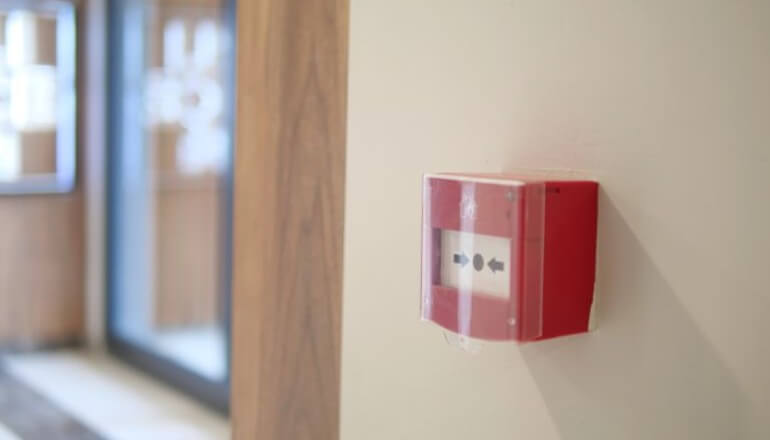BS 5839-1:2025 – What’s New in UK Fire Alarm Standards?
On 30 April 2025, the British Standards Institution published the updated BS 5839-1:2025, replacing the previous 2017 edition. This revised standard defines the latest best practices for the design, installation, commissioning, and ongoing maintenance of fire alarm systems in UK non-domestic buildings.
What is BS 5839-1?
BS 5839-1 is the authoritative British Standard that sets out requirements for fire alarm systems in commercial and other non-residential premises. Incorporated in Approved Document B of the UK Building Regulations, it provides guidance on system categories, device placement, performance standards, and maintenance protocols, ensuring life safety and regulatory compliance.
Key Changes in the 2025 Update
- Detector Recommendations for Sleeping Areas
Smoke detectors are now preferred over heat detectors in sleeping quarters such as hotels, care homes, and student residences, to provide faster fire detection. - Category System Updates
Lift shafts must now be included in L4 fire alarm systems. Detection is also required in some low-risk lobby spaces depending on the system type. - Enhanced Guidance on Manual Call Point Location
Call points should be installed in areas frequently occupied to improve accessibility and reduce accidental triggers. - Lockdown Alert Integration
Fire alarm panels may now include a unique lockdown alert tone, which must remain clearly distinguishable from the fire alarm signal. - Considering Obstructions on Ceilings
Installers must factor in physical obstructions like beams and ductwork that could cause blind spots in detector coverage. - Faster Activation and Fault Reporting Times
Automatic systems must transmit fire alarms within 90 seconds and fault signals within three minutes to speed up emergency responses. - Battery and Cable Changes
Red mains cables are now mandatory for easy identification. The battery backup sizing formula has been revised, requiring re-evaluation of existing systems. - Greater Focus on Visual Alarm Devices (VADs)
Visual alarms are emphasised more to support occupants who are deaf or hard of hearing. - Mandatory Zone Plans for Buildings with Multiple Zones
Clear zone plans must be displayed near control panels in multi-zone buildings to assist emergency responders. - Additional Requirements for Residential Care Settings
Fire alarms must automatically alert central monitoring stations to enable quick intervention. - Flexible Servicing Windows and Maintenance Requirements
The servicing interval has been extended to 5–7 months, allowing more flexibility. Maintenance should include time checks, log maintenance, removal of redundant devices, and user-friendly controls. Professionals are expected to maintain Continuing Professional Development (CPD). - Updated Documentation and Certification Procedures
All certificates, logs, and documents have been updated. Formal Modification Certificates are now required for system changes, with all variations documented.
Why These Changes Are Important
The 2025 revision to BS 5839-1 aims to improve life safety by:
- Providing quicker detection especially in sleeping areas
- Offering clearer maintenance guidance with flexible servicing intervals
- Enhancing inclusivity through better visual alarm standards
- Raising professional standards via improved documentation and training
For fire safety managers and building owners, keeping up to date with BS 5839-1:2025 is crucial to maintain compliance and protect lives effectively.




